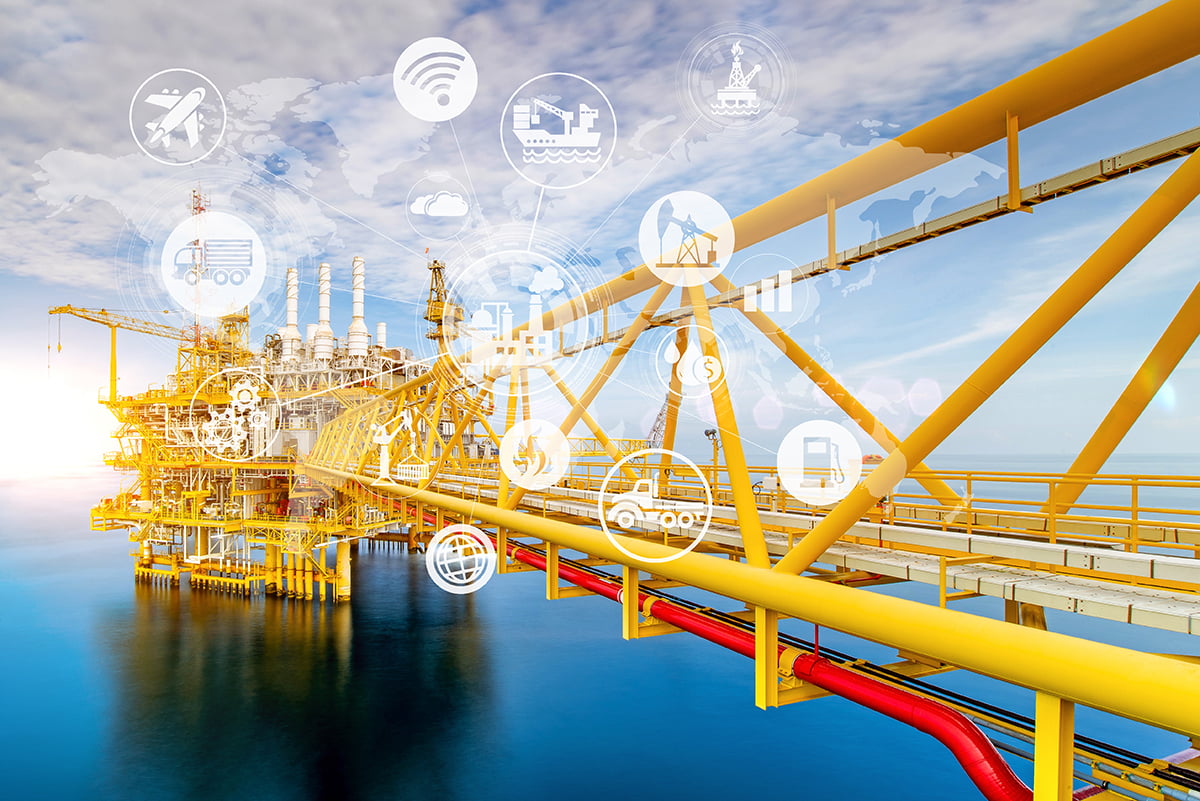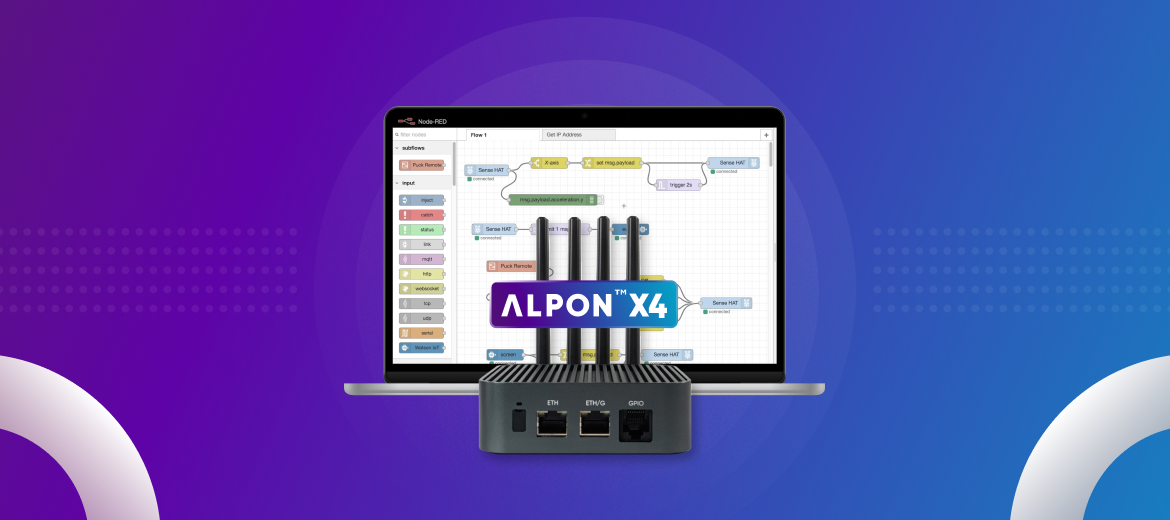Imagine vast oil fields stretching as far as the eye can see. Now, picture the challenge of gathering data from all those remote locations. That’s been the reality for the oil and gas industry for a long time. But guess what? 5G networks are shaking things up, paving the way for real-time data analysis right at the source and way out in those very same fields. This is a game-changer, promising to revolutionize how oil and gas companies operate. We’re talking about a future with more efficiency, better safety, and – you guessed it – optimized production!
So, how exactly does 5G make this real-time analysis at the edge possible for oil and gas companies? Let’s break it down into the key ingredients:
- Supercharged Speed and Bandwidth: 5G blows away previous generations when it comes to data transmission rates. Think downloading an entire movie in seconds or uploading massive sensor data sets from remote wells with ease. This means real-time analysis of all that data can happen right on-site instead of waiting for it to trickle back to a faraway server.
- Lightning-Fast Communication: Traditional networks often leave you waiting for data to trickle in, slowing down decision-making. 5G cuts out that lag with near-instantaneous communication. We’re talking real-time insights, allowing for immediate responses to critical situations. No more waiting around for sluggish data transfers to catch up!
- A Bonanza of Connected Devices: 5G networks can handle far more connected devices than in the past. This opens the door to a sensor explosion across sprawling oil and gas infrastructure. We’re talking cameras, sensors, and all sorts of cool Internet of Things (IoT) gadgets, all capturing valuable data right where the action happens. Imagine a network of pressure sensors on a pipeline constantly feeding back data, allowing for real-time monitoring and optimization.
- Edge Computing: Processing Power on the Spot: Working hand-in-hand with 5G is the rise of edge computing. This means data processing and analysis can happen closer to where it’s collected, at the edge of the network, instead of relying on faraway cloud servers. This translates to lightning-fast results and localized insights you can act on in a snap – no more waiting for data to travel halfway across the world for analysis!
The Benefits for Oil and Gas Companies: A Treasure Trove of Opportunity
With these technological advancements under their belts, oil and gas companies can leverage real-time analytics at the edge to achieve some pretty amazing things:
- Optimizing Production Like a Boss: Imagine analyzing sensor data from pipelines and wells to predict equipment failures (think vibration sensors here) and optimize production schedules. Plus, you can squeeze the most out of your resources with real-time data on things like pressure in pipelines (thanks, pressure sensors!). A study by McKinsey & Company in 2022 even found that real-time analytics at the edge can improve overall equipment effectiveness (OEE) in oil and gas production by up to 10% – that’s a big win! [1]
- Enhancing Safety: Keeping Everyone Out of Harm’s Way: Real-time data lets you monitor environmental conditions, detect gas leaks (acoustic sensors are your friends here for subsea environments!), and track worker movement. This translates to minimized safety risks and a faster response to potential hazards – because safety always comes first.
- Exploration and Discovery Made Easier: High-resolution seismic data combined with real-time analysis can help pinpoint potential reserves with pinpoint accuracy. Exploration efforts just got a whole lot more streamlined!
- Remote Operations and Maintenance: Taking Control from Anywhere: Imagine monitoring and controlling critical infrastructure remotely. That means less need for personnel on-site and fewer logistical challenges. Pretty cool, right?
- Boosting Sustainability: Going Green in the Oil and Gas Industry? You Bet! By analyzing data, companies can optimize energy consumption, reduce emissions (methane leak detection is a big one here!), and improve their overall environmental impact. Even the oil and gas industry can strive for a greener future, and 5G analytics are helping to pave the way.
The Road Ahead: Challenges and Opportunities
While 5G adoption in the oil and gas industry is still in its early stages, the potential for transformative change is undeniable. As the technology matures and infrastructure expands, we can expect to see even more innovative applications emerge, shaping the exciting future of this vital industry. But it’s not all sunshine and roses. There are some hurdles to clear:
- Cybersecurity Concerns: Securing the Influx of Data: The attack surface increases with a wider network and more devices at the edge. Data security, both while it’s traveling and when it’s stored, needs robust measures. Think of it like building a high-security vault for your data! We’re talking network segmentation (creating separate zones to isolate critical systems), continuous monitoring for suspicious activity, and ensuring everyone on the team is up-to-speed on cybersecurity best practices.
- Limitations of 5G Implementation: Building Bridges, Not Walls: Building and maintaining the infrastructure, especially in remote areas, can be expensive. There can also be coverage gaps in some locations. But hey, that’s why innovation keeps chugging along, right? According to McKinsey, “using advanced connectivity to optimize drilling and production throughput and improve maintenance and field operations could add up to $250 billion of value to the industry’s upstream operations by 2030.” [2] That’s a significant improvement that can translate to substantial cost savings and increased production efficiency – a win-win for everyone!
Sustainability in Focus: How 5G Analytics Can Heal the Planet
Despite these challenges, 5G analytics can significantly contribute to environmental sustainability in the oil and gas industry. Here’s how:
- Methane Leak Detection: Finding Leaks Before They Leak: Real-time data from sensors can identify methane leaks, those sneaky greenhouse gas culprits, allowing for swift repairs and minimized emissions. It’s like having a guardian angel for the environment!
- Optimizing Transportation Routes: Every Mile Counts: By analyzing data on well production, pipeline flow, and logistics, companies can optimize transportation routes for oil and gas products. This translates to less fuel burned and a smaller environmental footprint. Every little bit helps in the fight against climate change!
- Remote Monitoring and Maintenance: Fewer Flights, Less Fuss: Remember how we mentioned remote monitoring and control? That means fewer on-site personnel trips, translating to less travel and associated emissions. It’s a small change, but it adds up!
The Future Beckons: Embracing the Potential of 5G and Edge Analytics
By leveraging the power of 5G and innovative solutions like those offered by Sixfab, oil and gas companies can tap into the immense potential of real-time analytics at the edge. This translates to a more efficient, safer, and sustainable future for the industry – a future where innovation meets responsibility. Are you ready to drill into a new era of oil and gas operations? Let’s get started!
Bibliography



